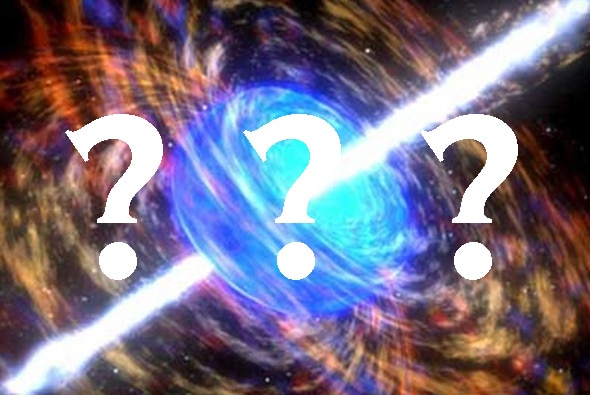Create a free profile to get unlimited access to exclusive videos, sweepstakes, and more!
FRB UPDATE Part 1: Yeah, So About That Fast Radio Burst …

Recently, I wrote about an exciting astronomical discovery: The location and distance of a fast radio burst, or FRB, a tremendous cosmic flash of radio-wave energy. Quite a few of these have been detected, but they last literally for milliseconds, making it extremely difficult to nail down their position (and, hopefully, their distance).
In April 2015 an FRB went off, and some very fast work by astronomers nailed the position of it by finding the fading glow from the event. It was found to overlap an elliptical galaxy 9 billion light-years away. This was a huge step for astronomy!
But now we may have to take a step back.
The FRB itself was real, to be clear. After the burst, the astronomers used a different radio telescope to scan that part of the sky looking for a signal that appeared to be fading away, indicating the dimming afterglow of the burst. They found one and showed it could be from the FRB.
But two astronomers have looked at the data and are not convinced an FRB afterglow was actually seen. In a paper that is online and will be submitted to the Astrophysical Journal Letters (and not yet peer reviewed), they suggest the astronomers looking for the afterglow were instead fooled by the elliptical galaxy itself.
All big galaxies have a supermassive black hole in their cores. If enough material is pouring into that black hole, it can form a disk outside the hole. This disk gets very hot, and glows. Galaxies like this are said to be active galaxies.
They’re notoriously variable, too, changing in brightness over relatively short periods of time. In the new report, the astronomers argue convincingly that this matches the data better than a fading FRB afterglow. The galaxy does appear to be active and variable, for one thing, which could easily explain the fading source seen. They also show that the way the light dimmed in the galaxy doesn’t match what is known about the way huge explosive events like this fade, again throwing some cold water on the claim.
I’ll note that this is interesting, even compelling, but not conclusive. More observations are needed, and given how important this finding is, I have no doubt they’ll be made. This is science in progress, folks, and things change as more eyeballs and brains chew over the data.
I have to note another issue, too: If the afterglow was not from the FRB, then the distance was not necessarily accurately determined. The FRB may have been in another galaxy entirely, or even in our own! And the distance was the key ingredient for the next bit of news: Half the “missing mass” of the Universe had been found. Using the way the radio signal from the FRB was shifted in wavelength/frequency, the original astronomers were able to estimate how much matter was between us and the FRB. If the distance isn’t known, then that measurement can’t be made. So until we know for sure where that FRB was in the Universe, we can’t say anything about the amount of material the signal passed through on its way to Earth.
Still, the news isn’t all bad. We’ve learned more stuff about FRBs in the past week as well … which I’ll cover on Part 2. Stay Tuned.
Tip o’ the dew shield to Nadia Drake.


























